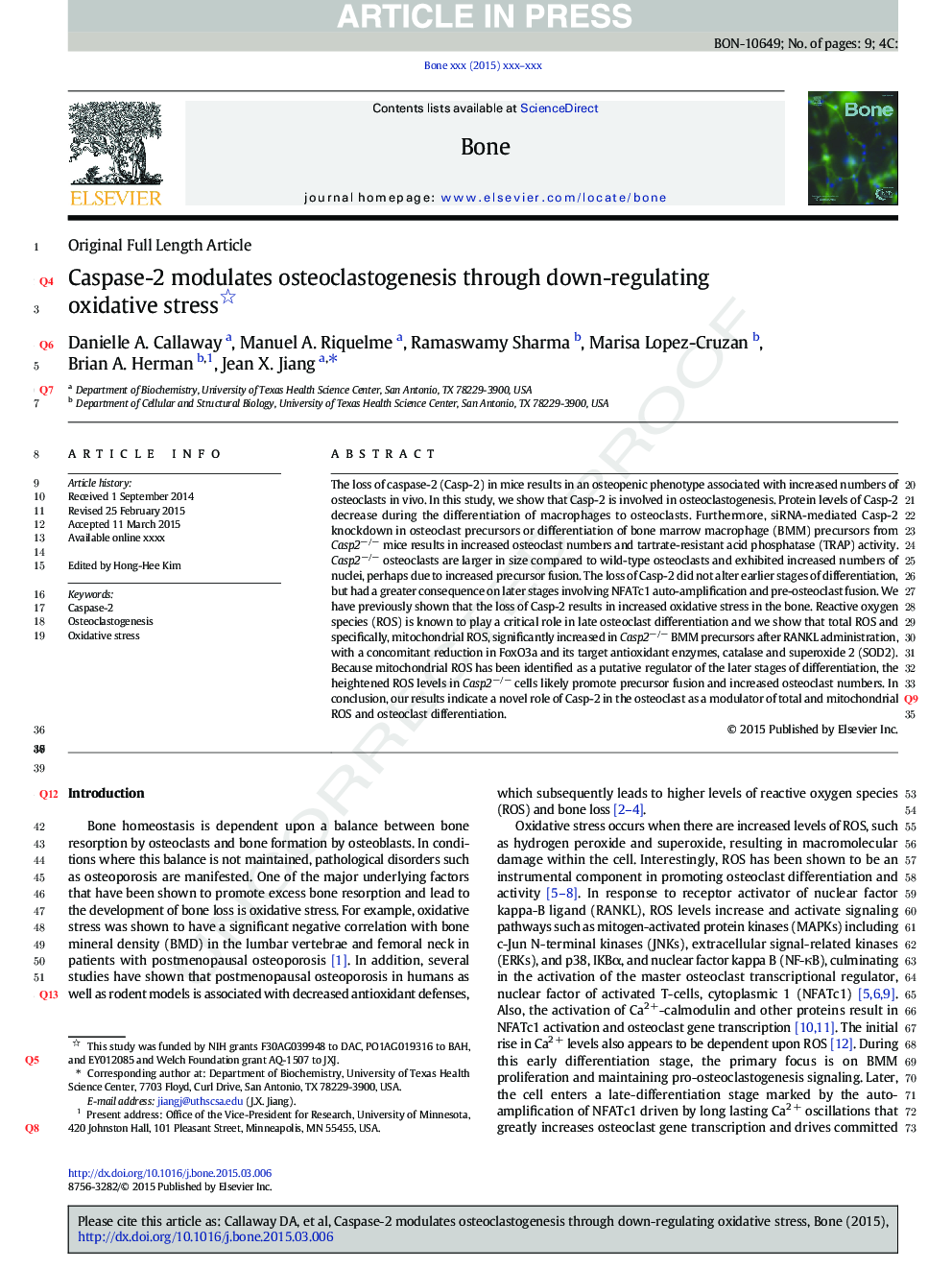| Article ID | Journal | Published Year | Pages | File Type |
|---|---|---|---|---|
| 5889542 | Bone | 2015 | 9 Pages |
Abstract
The loss of caspase-2 (Casp-2) in mice results in an osteopenic phenotype associated with increased numbers of osteoclasts in vivo. In this study, we show that Casp-2 is involved in osteoclastogenesis. Protein levels of Casp-2 decrease during the differentiation of macrophages to osteoclasts. Furthermore, siRNA-mediated Casp-2 knockdown in osteoclast precursors or differentiation of bone marrow macrophage (BMM) precursors from Casp2â/â mice results in increased osteoclast numbers and tartrate-resistant acid phosphatase (TRAP) activity. Casp2â/â osteoclasts are larger in size compared to wild-type osteoclasts and exhibited increased numbers of nuclei, perhaps due to increased precursor fusion. The loss of Casp-2 did not alter earlier stages of differentiation, but had a greater consequence on later stages involving NFATc1 auto-amplification and pre-osteoclast fusion. We have previously shown that the loss of Casp-2 results in increased oxidative stress in the bone. Reactive oxygen species (ROS) is known to play a critical role in late osteoclast differentiation and we show that total ROS and specifically, mitochondrial ROS, significantly increased in Casp2â/â BMM precursors after RANKL administration, with a concomitant reduction in FoxO3a and its target antioxidant enzymes, catalase and superoxide 2 (SOD2). Because mitochondrial ROS has been identified as a putative regulator of the later stages of differentiation, the heightened ROS levels in Casp2â/â cells likely promote precursor fusion and increased osteoclast numbers. In conclusion, our results indicate a novel role of Casp-2 in the osteoclast as a modulator of total and mitochondrial ROS and osteoclast differentiation.
Related Topics
Life Sciences
Biochemistry, Genetics and Molecular Biology
Developmental Biology
Authors
Danielle A. Callaway, Manuel A. Riquelme, Ramaswamy Sharma, Marisa Lopez-Cruzan, Brian A. Herman, Jean X. Jiang,
